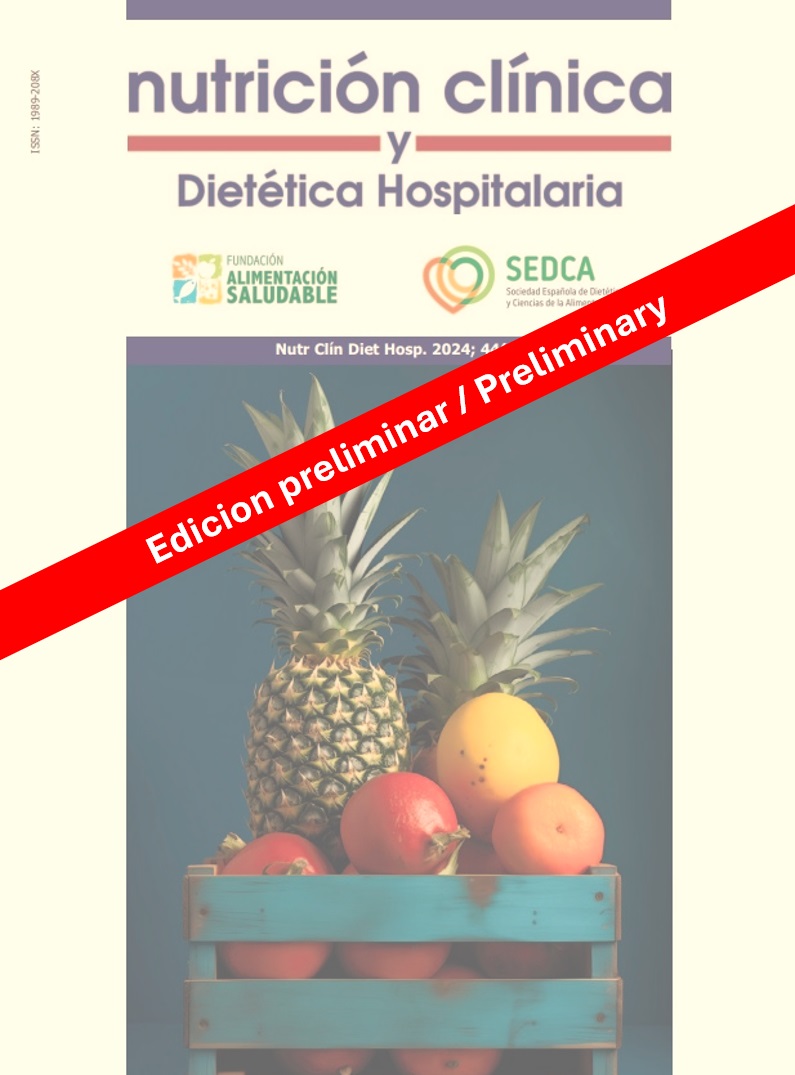Abdominal circumference and physical performance in personnel of the National Police of Peru
DOI:
https://doi.org/10.12873/Keywords:
Circunferencia Abdominal, Aptitud Física, Adiposidad, Composición corporral, PolicíaAbstract
Introduction: Police personnel require maintaining opti
mal physical and nutritional status to ensure adequate physical performance and efficient work performance.
Objective: To evaluate the relationship between waist circumference and physical performance in Peruvian National Police officers assigned to the State Security Directorate.
Materials and methods: A non-experimental, correlational cross-sectional study was conducted. Participants were 196 police officers, selected through simple random probability sampling. Waist circumference was measured with a SECA tape
measure and recorded on an anthropometric record. Physical performance was assessed using the Burpee test, and muscle strength (a CAMRY hydraulic dynamometer), cardiorespiratory endurance (a Rockport test with a Polar H9 sensor), and agility (a cone test and stopwatch). All measurements were recorded on a physical evaluation record. Correlation between variables was performed using Spearman’s coefficient..
Results: 86.2% of police officers were overweight (59.7%
overweight, 21.4% grade I obesity, and 5.1% grade II obe
sity). The predominant age groups were 30–39 years
(43.4%) and 50–65 years (35.2%). In the female group, 53.3% had a high-risk waist circumference and 20.0% had a very high risk. In male police officers, 40.4% had a high risk and 21.1% had a very high risk. Regarding physical performance, 65.3% were above average, 23.9% were average, and 10.7% were below average. A weak negative correlation was identified between waist circumference and physical performance (Rho = -0.010; p = 0.029), which was statistically significant (p < 0.05).
Conclusion: There is a weak indirect correlation between
abdominal circumference and physical performance, suggesting that as abdominal circumference increases, physical performance tends to decrease in Peruvian National Police officers.
References
1. Guevara-Tirado A. Estado conyugal asociado a perímetro abdominal en adultos peruanos, 2022. Rev Cient Cienc Salud. 2024;6:e6133. Disponible en: https://docs.bvsalud.org/biblioref/2024/03/1532698/ao133-estado-conyugal-asociado-a-perimetro-abdominal.pdf
2. Organización Panamericana de la Salud. Prevención de la obesidad - OPS/OMS [Internet]. 2024 [citado 2024 Ago 26]. Disponible en: https://www.paho.org/es/temas/prevencion-obesidad
3. Zamanillo-Campos R, Chaplin A, Romaguera D, Abete I, Salas-Salvadó J, Martín V, et al. Longitudinal association of dietary carbohydrate quality with visceral fat deposition and other adiposity indicators. Clin Nutr. 2022;41(10):2264-74. https://doi.org/10.1016/j.clnu.2022.08.008
4. Lukács A, Horváth E, Máté Z, Szabó A, Virág K, Papp M, et al. Abdominal obesity increases metabolic risk factors in non-obese adults: a Hungarian cross-sectional study. BMC Public Health. 2019;19(1):1533. https://doi.org/10.1186/s12889-019-7839-1
5. Aparco JP, Cárdenas-Quintana H. Correlation and agreement between the body mass index and abdominal perimeter with the waist-to-height ratio in Peruvian adults aged 18 to 59 years. Rev Peru Med Exp Salud Publica. 2022;39(4):392-9. https://doi.org/10.17843/rpmesp.2022.394.11932
6. Organización Mundial de la Salud. Actividad física [Internet]. [citado 2024 Ago 26]. Disponible en: https://www.who.int/es/news-room/fact-sheets/detail/physical-activity
7. Enríquez L, Cervantes N, Candia R, Flores L. Capacidades físicas y su relación con la actividad física y composición corporal en adultos [Internet]. 2024 [citado 2024 Sep 24]. Disponible en: https://dialnet.unirioja.es/servlet/articulo?codigo=8074581
8. Silva JA da, De Salles Painelli V, Santos IC, Marques DC, Oliveira FM de, Oliveira LP de, et al. No effect of combined tele-exercises and nutritional coaching on anthropometric, body composition or exercise capacity outcomes in overweight and obese women: a randomized clinical trial. Nutr Hosp. 2022;39(2):329-36. http://dx.doi.org/10.20960/nh.03822
9. Ortega R, Grandes G, Gómez-Cantarino S; Grupo PEPAF. Vulnerability of obesity as defined by body mass index, waist circumference, and body fat percentage. Atención Primaria. 2023;55(2):102523. https://doi.org/10.1016/j.aprim.2022.102523.
10. Kong N, Yang G, Wang L, Li Y. Calisthenics exercises to intervene in obesity and diabetes in middle-aged people. Rev Bras Med Esporte [Internet]. 2022 [citado 2024 Ago 26]. Disponible en: https://doi.org/10.1590/1517-8692202228022021_0457
11. Ramírez-Vélez R, Garcia-Hermoso A, Prieto-Benavides DH, Correa-Bautista JE, Quino-Ávila AC, Rubio-Barreto CM, et al. Muscle mass to visceral fat ratio is an important predictor of the metabolic syndrome in college students. Br J Nutr. 2019;121(3):330-9. https://doi.org/10.1017/S0007114518003392
12. Hernández Sampieri R. Metodología de la investigación [Internet]. México: McGraw-Hill; 2020 [citado 2024 Ago 26]. Disponible en: https://ccie.com.mx/wp-content/uploads/2020/03/Metodologia_de_la_investigacion.pdf
13. Topend Sports. Prueba de flexiones: pruebas de aptitud física en casa [Internet]. [citado 2024 Sep 10]. Disponible en: https://www.topendsports.com/testing/tests/home-pushup.htm
14. Topend Sports. Prueba de fuerza de agarre de la mano [Internet]. [citado 2024 Sep 10]. Disponible en: https://www.topendsports.com/testing/tests/handgrip.htm
15. Pauole K, Madole K, Garhammer J, Lacourse M, Rozenek R. Reliability and validity of the T-test as a measure of agility, leg power, and leg speed in college-aged men and women. J Strength Cond Res. 2000;14(4):443-50.
16. Topend Sports. President’s Challenge Carrera de resistencia / Prueba de caminata [Internet]. [citado 2024 Sep 10]. Disponible en: https://www.topendsports.com/testing/tests/endurance-run.htm
17. Lopategui E. Pruebas aeróbicas: distancia – caminar y correr [Internet]. [citado 2024 Sep 13]. Disponible en: http://www.saludmed.com/Bienestar/Cap2/Distance.html
18. Martinez-Gomez D, Hamer M, Ortega FB, Cabanas-Sanchez V, Sadarangani KP, Lavie CJ, et al. Association of changes in physical activity and incidence and remission of overall and abdominal obesity in 113,950 adults. Obesity (Silver Spring). 2020;28(3):660-8. https://doi.org/10.1002/oby.22709
19. Jamka M, Mądry E, Krzyżanowska-Jankowska P, Skrypnik D, Szulińska M, Mądry R, et al. The effect of endurance and endurance-strength training on body composition and cardiometabolic markers in abdominally obese women: a randomised trial. Sci Rep. 2021;11:12339. https://doi.org/10.1038/s41598-021-90526-7
20. Fernández-García JC, Castillo-Rodríguez A, Onetti W. Influence of overweight and obesity on strength in childhood. Nutr Hosp. 2019;36(5):1055-60. http://dx.doi.org/10.20960/nh.02596
21. Avendaño A, Rodríguez E, Urbina. ¿Es la grasa abdominal subcutánea un predictor de la variabilidad cardíaca en hombres con bajo riesgo metabólico? Rev Salud Publica [Internet]. 2016 [citado 2024 Ago 26];48(3). Disponible en: http://dx.doi.org/10.18273/revsal.v48n3-2016008
Downloads
Published
Issue
Section
Categories
License
Copyright (c) 2025 Nutrición Clínica y Dietética Hospitalaria

This work is licensed under a Creative Commons Attribution-NonCommercial-NoDerivatives 4.0 International License.
Los lectores pueden utilizar los textos publicados de acuerdo con la definición BOAI (Budapest Open Access Initiative)



